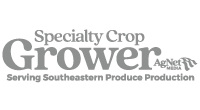
Members of the University of Georgia (UGA) Extension team recently wrote an update on a Tango rootstock trial in the Cold Hardy Citrus Connection. The authors were Jake Price, Mary Sutton, Doug Collins, Jacob Kalina, Josh Dawson, Holly Anderson, Michasia Dowdy, Sara Curry, Ben Reeves, Tucker Price and Justin Shealey. Edited excerpts follow:
The Tango rootstock trial has been through some environmental challenges but is going strong. The Tangos, planted on 10 different rootstocks with nine repetitions in 2020, endured an extended severe freeze at the end of 2022 followed by a Category 1 hurricane, a tropical storm and a Category 2 hurricane.
Before the freeze in 2022, the trees had a nice yield but only about half was harvested and recorded due to the freeze at Christmas that year. The remaining fruit froze and quickly dropped from the trees before it could be harvested. The result is partial yield data for 2022.
After the freeze, the trees were damaged, leading to greatly reduced yields in 2023.
This year, the trees were hit by a Category 2 hurricane, which knocked off or damaged fruit and lowered yields. Trees with severe freeze damage lost limbs due to the high winds and fruit load. Hopefully, next year will be normal.
In 2022 and 2023, fruit were ready to begin harvesting by mid-December. This season, however, the fruit was late to color. The harvest was delayed to Jan. 7 to give the fruit more time to color.

The Brix this year was considerably lower despite being sampled three weeks later than prior years. The acid levels of Tango are higher than satsumas, which gives them a “tangy” flavor compared to a satsuma. Satsumas normally run about .75. The average acid level of Tangos this year was .90. As the fruit remains on the trees, the Brix increases, and the acid decreases.
Average yield for 2024 was 63 pounds of fruit per tree.
No conclusions can be drawn about which rootstocks are best for Tango. However, there are some very good candidates.
The only two that are not recommend at this point are US-852 and US-1279 due to their poor performance after the 2022 freeze.
In most years, Tangos can begin harvest in mid-December. Fruit holds on the tree for many weeks, and harvest can be delayed well past Christmas. None of the fruit at the trial have frozen this year, and the fruit look good.
Source: UGA Extension
Share this Post
Sponsored Content










